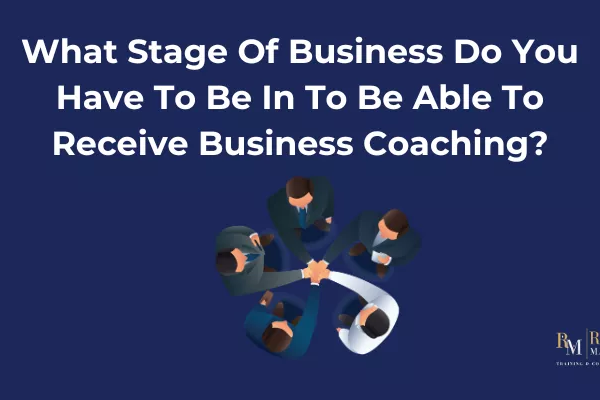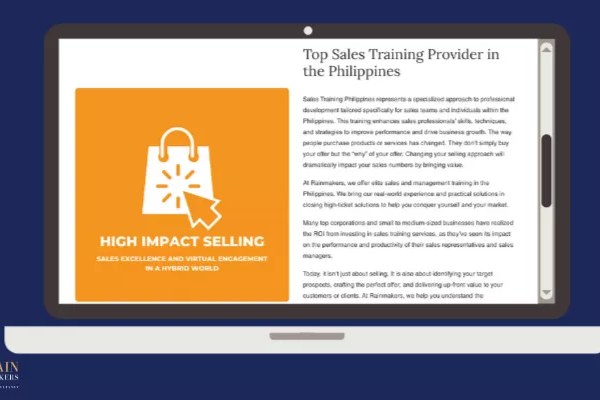by Venchito Tampon | Last Updated on April 26, 2025
Understanding the various selling techniques is crucial for any salesperson aiming to succeed in the competitive market.
In this article, I’ll explore the four primary types of selling techniques: Transactional Selling, Solution Selling, Consultative Selling, and Provocative Selling.
Each method has distinct characteristics and is best suited for specific situations and customer needs.
By mastering these techniques, sales professionals can tailor their approaches to meet their client’s expectations better and improve their sales outcomes. I’ll also share my own actionable takeaways for applying these selling techniques.
4 Types of Selling Techniques
1. Transactional Selling
Transactional selling focuses on quick, one-time sales without considering or emphasizing long-term relationships. This selling technique is ideal for low-ticket items with short sales cycles and is often used in retail or eCommerce.
If your sales organization has an environment that involves setting short-term targets and sales quotes, transactional selling might be the best selling technique.
While the majority of salespeople utilize this selling technique, I believe that if you want to stay long-term, you shouldn’t do things just for transaction sake.
I teach this in my sales training: a sale is a sale if it is repeated. In other words, you’ll grow and achieve your sales targets if your recent sale produces another sale through referral, word-of-mouth marketing, or digital marketing.
Actionable tips:
- You shouldn’t just do transactional selling for money’s sake. Think of ways to add value to your customers.
- Forecast and act on volume sales while assessing your sales operations and allowing improvements to hit your next sales targets.
- Turn transactions into relationships. Establish connections by adding more value to the services. For instance, we add post-training reports and follow-up sessions to our services with corporate training clients after we’ve conducted their in-house face-to-face training. This approach enables us to assess the impact of our training on their employees’ achievement of their business objectives.
- Develop customer service excellence through customer service training or additional resources you can find and invest in online.
2. Solution Selling
Solution selling concentrates on identifying and solving the customer’s specific problems.
The approach moves beyond selling a product to offering a comprehensive solution. The goal is to transform from problem seeker to problem solver.
One consideration in solution selling is that prospects must know exactly their problems so you can immediately provide solutions to them.
This selling technique is best suited for markets with complex products or services that require detailed explanations and demonstrations.
Actionable tips:
- Be discerning in identifying customers’ pain points and challenges. Solutions can only be provided once problems are identified.
- Include unique value proposition, features, benefits, and results (even case studies of clients you’ve worked with) in your marketing collaterals and website. This would help your target clients see and perceive the value of your offers – products or services.
- Let prospective clients schedule a meeting with you to discuss their needs. From there, you can offer the best solution.
- If you’re starting a business, you can create packages with different solutions that suit various clients. For example, if you’re in the B2B space, you can have packages suited for startups, established businesses, or enterprises. This way, you can capture a more significant market share with your offers and not just piggybank on one market segment (unless you’re into niching down your services early on). For those aiming to enhance their ability to identify and address customer challenges effectively, enrolling in a digital marketing course can provide valuable insights into modern tools and strategies.
3. Consultative Selling
Consultative selling is a technique that focuses on identifying customers’ needs and engaging them with proper solutions to solve their problems or challenges.
This is my go-to selling technique in my SEO agency, coffee franchising, and corporate training services.
Given that consultative selling emphasizes the value of the service during the consultation (initial meeting), it has an advantage over other salespeople chasing out clients with mere sales presentations.
Actionable tips:
- Pitch to schedule a call or initial meeting. You can’t quickly assess customers’ needs without talking to them. The best analysis of customers’ needs is done during physical or online meetings, where you can ask certain questions about their desires, goals, challenges, and needs.
- Do not start your sales presentations with your company profile. Be interested in your client’s needs by asking questions about their background, current context, situation, and why they’re looking for a product or service.
- Assess your sales meetings if most of the talking is done on your end. Be mindful of every sales conversation and always end it with a call to action (either you’ll craft the proposal or ask them if they have any questions about your company).
- Ask follow-up questions to go deeper into the core needs of your clients. The reason is that you want to address it in your client’s proposals. Your proposal will show their exact needs and customized solutions.
- Customize your solutions based on the client’s needs. Do not provide too generic solutions, as this won’t serve them well (and will not be appealing when they see your proposals).
- Act like a business consultant. Make suggestions that will best improve your clients’ business operations. Be more suggestive, not pushy. Allow your clients to make decisions. Avoid being too aggressive in your sales meetings.
4. Provocative Selling
As its title says, provocative selling challenges customers’ current thinking, highlighting problems they may not recognize and making it urgent to adopt new solutions.
Prospects in provocative selling often must be made aware of their problems or their severity. This sales approach leverages data and insights to provoke thought and demonstrate the need for change, requiring salespeople to have a deep understanding of the market and the ability to present compelling arguments.
This technique is best suited for markets facing significant changes or disruptions where innovative solutions are necessary and when customers are complacent or resistant to change.
It is particularly effective in technology and innovation-driven sectors, markets undergoing digital transformation, and during economic downturns where businesses need to rethink their strategies.
Provocative selling is more like a consultative approach to provoke someone to rethink strategies and invest in new technologies and innovation.
This selling technique fits the higher end of the selling process. Target markets include C-suite level and upper management of accounts looking for new ways to get more significant market share in their industries.
Actionable tips:
- Assess your customers’ needs if provocative selling is applicable. Avoid being too aggressive in your asking when the client is in the awareness stage, which means that they still don’t know about their problems or the solution to their problems.
- Start educating your customers by publishing informative content assets on your website or other publications. This wouldn’t just increase your brand awareness and gain new potential customers through referral visits and conversions.
Each selling technique has strengths and ideal applications. By matching the right approach to the customer’s needs and market conditions, sales professionals can enhance their effectiveness and achieve their sales goals more efficiently.
Apply Selling Techniques Based on Customers’ Needs
Mastering these four selling techniques—Transactional Selling, Solution Selling, Consultative Selling, and Provocative Selling—equips sales professionals with a versatile toolkit to address various customer needs and market conditions.
By understanding each method’s unique characteristics and best-use scenarios, salespeople can more effectively engage with prospects, tailor their sales strategies, and ultimately drive better sales outcomes.
Whether the focus is on quick, volume-based transactions or long-term, relationship-driven consultative sales, the key lies in selecting the right approach for the right situation.
The Author
Venchito Tampon
Venchito Tampon is a Filipino motivational speaker, Business Consultant, Founder and Lead Corporate Trainer of Rainmakers Training Consultancy. He trained and spoken in over 250+ conventions, seminars, and workshops across the Philippines and internationally including Singapore, Slovakia, and Australia. He has worked with top corporations including SM Hypermarket, Shell, and National Bookstore.
He also founded SharpRocket, a digital marketing company, Blend N Sips, eCommerce for coffee supplies, and Hills & Valleys Cafe, a local cafe with available franchising.
He is a certified member of The Philippine Society for Talent Development (PSTD), the premier organization for Talent Development practitioners in the country.
An active Go Negosyo Mentor (of Mentor Me program) and a business strategist and consultant.
You may also like
What Stage Of Business Do You Have To Be In To Be Able To Receive Business Coaching
Many entrepreneurs ask, "Do I need to wait until my business scales before I…
Best Sales Training Providers in the Philippines [2025]
With many training options available, choosing the best sales training provider…



